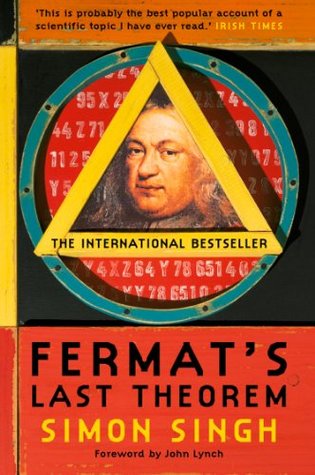More on this book
Community
Kindle Notes & Highlights
by
Simon Singh
Read between
January 25 - May 16, 2019
The problem looks so straightforward because it is based on the one piece of mathematics that everyone can remember – Pythagoras’ theorem: In a right-angled triangle the square on the hypotenuse is equal to the sum of the squares on the other two sides.
It is the same with life. Some are influenced by the love of wealth while others are blindly led on by the mad fever for power and domination, but the finest type of man gives himself up to discovering the meaning and purpose of life itself. He seeks to uncover the secrets of nature. This is the man I call a philosopher for although no man is completely wise in all respects, he can love wisdom as the key to nature’s secrets.
Three centuries later Bertrand Russell would comment on this apparent oxymoron: ‘How dare we speak of the laws of chance? Is not chance the antithesis of all law?’
Calculus is the ability to calculate the rate of change, known as the derivative, of one quantity with respect to another.
Friendly numbers are pairs of numbers such that each number is the sum of the divisors of the other number. The Pythagoreans made the extraordinary discovery that 220 and 284 are friendly numbers. The divisors of 220 are 1, 2, 4, 5, 10, 11, 20, 22, 44, 55, 110, and the sum of all these is 284. On the other hand the divisors of 284 are 1, 2, 4, 71, 142, and the sum of all these is 220.
Even today it is impossible to predict the exact solution to the so-called ‘three-body problem’.
On a fatal day, in the holy season of Lent, Hypatia was torn from her chariot, stripped naked, dragged to the church, and inhumanely butchered by the hands of Peter the Reader and a troop of savage and merciless fanatics; her flesh was scraped from her bones with sharp oyster-shells, and her quivering limbs were delivered to the flames.
Hypatia
Proof is an idol before which the mathematician tortures himself.
An astronomer, a physicist, and a mathematician (it is said) were holidaying in Scotland. Glancing from a train window, they observed a black sheep in the middle of a field. ‘How interesting,’ observed the astronomer, ‘all Scottish sheep are black!’ To which the physicist responded, ‘No, no! Some Scottish sheep are black!’ The mathematician gazed heavenward in supplication, and then intoned, ‘In Scotland there exists at least one field, containing at least one sheep, at least one side of which is black.’
First theorem of undecidability If axiomatic set theory is consistent, there exist theorems which can neither be proved or disproved.
Second theorem of undecidability There is no constructive procedure which will prove axiomatic theory to be consistent.
Cretan paradox, or liar’s paradox. Epimenides was a Cretan who exclaimed: ‘I am a liar!’
hyperbolic space.
Taniyama–Shimura conjecture
An expert problem solver must be endowed with two incompatible qualities – a restless imagination and a patient pertinacity. Howard W. Eves
Proof by induction is essentially a two step process: (1) Prove that the statement is true for the first case. (2) Prove that if the statement is true for any one case, then it must be true for the next case.
peritonitis


